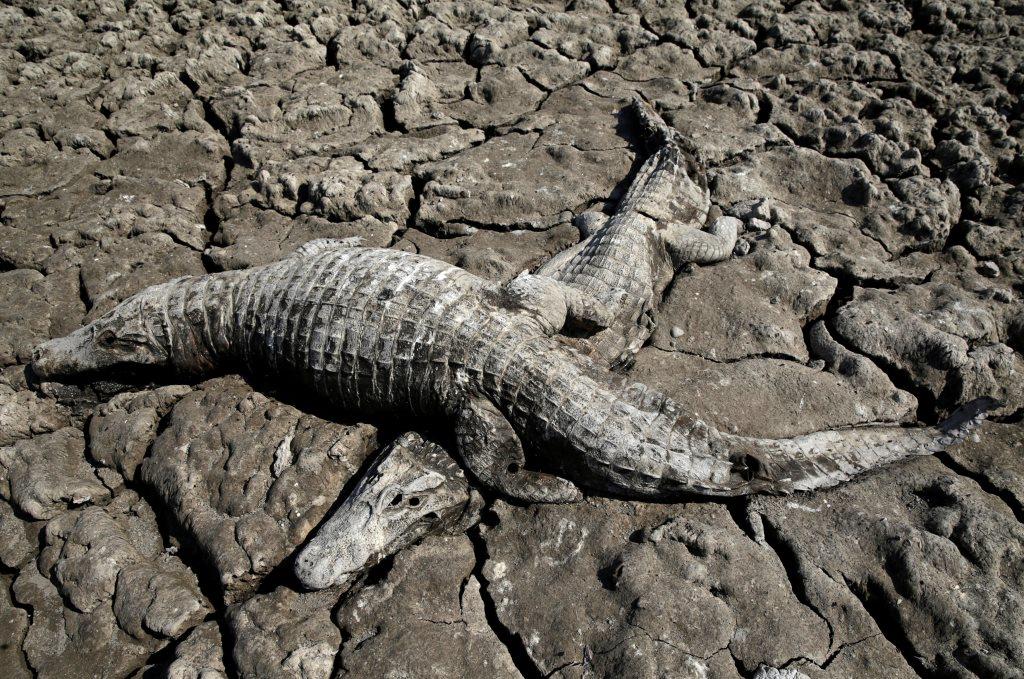Image: Dead yacare caimans are seen in the dried-out river bed of the Pilcomayo river in Boqueron, Paraguay, August 14, 2016.
By Daniela Desantis
GENERAL DIAZ, BOQUERON, PARAGUAY (Reuters) – In Paraguay, alongside the Pilcomayo River, black vultures flew over a shrinking pond where a group of crocodilian reptiles known as yacare caimans sought refuge.
Water from the river, which divides Paraguay and Argentina in the area of the Gran Chaco, was scarce.
This is not an uncommon sight in the region of General Diaz, about 700 kilometers (435 miles) northwest of the country’s capital Asuncion, where the Pilcomayo’s waters form lakes and streams that give life to capybaras, birds and caimans.
“The river’s situation is critical. No water is forecast to enter the basin until December, as happens every year,” said Alcides Gonzalez, a resident of the area.
The Pilcomayo River, which descends from the Andes mountains in Bolivia, is at its lowest level of the past 19 years in Paraguay, according to the Ministry of Public Works and Communications.
“The river is 60 percent sediment and 40 percent water,” said Gonzalez, who owns a cattle ranch that is also home to deer, capybaras and more than 8,000 caimans that consistently migrate in search of water.
“Animals are migrating naturally, but those that are weak no longer move,” Gonzalez said.
In the Agropil lagoon, north of Gonzalez’s ranch, the once permanent layer of water has turned to mud, where the yacare caimans are attracted to humidity and feed on vultures and other birds that flock around dead animals.
Livestock is also beginning to suffer from the scarcity of water. Roughly one hundred cows have died in the lagoon area, where most farmers have small ranches and lack the resources to dig wells and pump fresh water.
Some cattle cool themselves in ponds of salt water, but they are unable to drink it.
“That’s the problem – those that have remained here dependent on this river will surely die as they become thin and weak,” he added.
The Agropil lagoon, which is fed by water from the Pilcomayo River, is surrounded by trees and dry cracked ground.
Residents around General Diaz say it hasn’t rained there since last May, and that the river was already greatly reduced in 2015 and unable to fill lagoons and ponds as it used to. Therefore they must resort to digging wells to find water.
Because of the lack of water, the governments of Paraguay and Argentina have built canals to control irregular flowing.
Using social media, a group of volunteers organized a rescue operation to save the caimans in response to what they considered the government’s slow reaction to the drought. They captured the animals and transported them in private vehicles from dry river beds to artificial lakes on local ranches.
But efforts by the volunteers have not always panned out. One group took about 17 caimans to a pond that they did not realize was salt water, and most of the animals died.
(Reporting by Daniela Desantis in Paraguay; Editing by Melissa Fares and Diane Craft in New York)
Copyright 2015 Thomson Reuters. Click for Restrictions.


